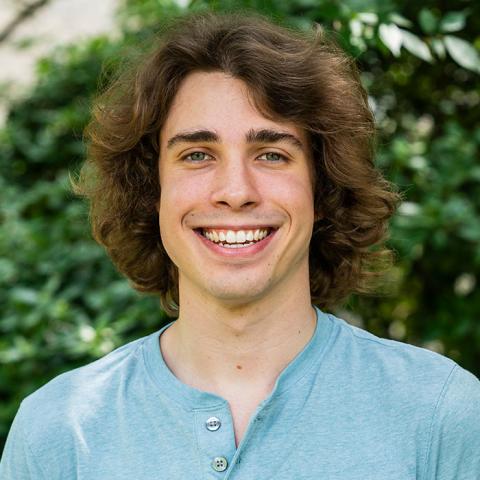Summer Centered: Leila Breen ’20 Curates a New View of History

Leila Breen '20 at her work station in the exhibitions department of the Penn Museum, where she uses a 3-D printer to create small-scale model replicas of artifacts to be used in the Mesoamerican and African collections for visually impaired visitors to better interact with the material. Photo by Patrick Montero.
Details
As an intern with the University of Pennsylvania Museum of Archaeology and Anthropology’s exhibitions department, classical and near eastern archaeology minor Leila Breen ’20 is learning first-hand how to curate and showcase historical narratives.
Leila Breen ’20 is learning a new way to tell stories. As an intern with the exhibitions department at the University of Pennsylvania Museum of Archaeology and Anthropology, she is mastering the skill of telling history through spatially arranged, object-based narratives.
“Object-based history [archaeology] can provide a direct, physical link to broader narratives, like classical histories, that people can oftentimes find otherwise inaccessible,” said the growth and structure of cities major who is also minoring in classical and near eastern archaeology.
As a student, Breen often spends her time studying the narratives made legible through archaeological archives, but this summer she is learning what it means to curate these narratives. The political components of this project have not been lost on her.
“My interdisciplinary education in the Bi-Co has taught me to ask the broader questions in museum studies, all of which revolve around how to display artifacts from another culture without exoticizing its people or reducing their culture to a few objects,” said Breen, whose internship is possible thanks to support from the John B. Hurford ’60 Center for the Arts and Humanities . “Museum studies can be a tricky field to navigate in this sense, but it is also part of what makes it so interesting to me: how can we preserve and make accessible relics of history in a way that is responsible and ethical?”
On a day-to-day basis, navigating this process can take a variety of forms: sometimes Breen works independently on a series of exhibitions-oriented projects, but regularly her position situates her as a student, learning actively from museum industry veterans.
“About 20 of us interns attend weekly lectures from various professionals at the Penn Museum, whose topics range from academic engagement and visitor services to archival research and curatorial practices,” she said. “We also attend weekly gallery tours given by the curators themselves.”
In terms of individual projects, Breen has assumed an unusual role as “resident expert on 3-D printing.” Besides a stint with geographic information system (GIS) software this past semester, she hasn’t much sunk her teeth into the digital side of archaeological work. Nonetheless, she has developed a fluency with 3-D printing in order to expand the museum’s accessibility.
“Recently, museums have begun displaying touchable, small-scale models of their artifacts for those who are visually impaired so that they can better interact with the material,” said Breen. “I have been wrestling with a 3-D resin printer to generate various miniature artifacts. Hopefully these prints will end up in the new galleries next to their progenitors.”
At times, Breen also occupies a more pedagogical position. Alongside her mentor Joshua Lessard, she is responsible for putting together a lesson for children attending the museum’s summer camp about the history of engineering in the Mediterranean region. As with all of her work, Breen is approaching this task as an opportunity to correct inaccurately Eurocentric views of history.
“My goal is to create an activity-based lesson plan that gets kids excited about the architectural feats of the ancient ancient Mediterranean powers while also teaching them about the relatively untold technological inventions of Mesopotamian and Indus civilizations that made Greek and Roman engineering possible,” she said.
Interning with the Penn Museum has helped Breen understand that strong contemporary exhibitions consist of two important factors: a reparative, anti-colonial perspective on the history itself—as demonstrated in her lesson plan, for example—and an emphasis on innovations that increase the clarity and accessibility of the history’s presentation, like her work 3-D printing models of artifacts. A focus on these two facets of exhibition work can help museums continue to preserve history while also foregrounding their impact on communities in the present.
“This internship—along with my studies in the Bi-Co—has especially contributed to my understanding of the museum as a public amenity and cultural center, and in this way broadened my conceptions of how the objects in the galleries communicate with the community and with the city at large,” said Breen. “Curatorial and exhibition work requires an acute consideration of the power dynamics at work when we tell or are told a story. Ultimately, archaeology is about representing the past faithfully and with care towards what these stories mean in the present.”
“Summer Centered” is a series exploring our students’ Center-funded summer work.




